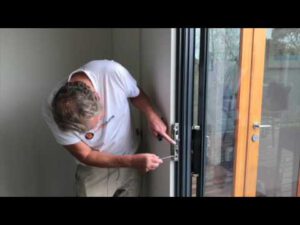The first step to door lock adjustment is to identify the cause. If the deadbolt is misaligned, the strike plate is likely to be out of place. The most common cause is a slack bolt. It’s easy to fix by moving the bolt strike in the door jamb. After locating the issue, adjust the latch to the correct position and try the door again. You may need to repeat the process if the latch is still sticking. However, if you are not confident doing the job yourself, you may hire a professional. Charlotte Locksmith can replace or adjust your door lock efficiently helping you save time and money.

A metal file or other tool is necessary to adjust the strike plate. First, make sure that the strike plate is not in the way of the snib. Next, apply the lipstick to the strike plate to adjust the latch. After doing so, try closing and re-latching the door to test the latch. If the problem persists, try adjusting the lock with a wrench. Alternatively, you can take the door off the wall and check the hinges and latch.
The screws on a mortise lockset should be tightened. If the door is too low, adjust the latch by loosening the bottom hinge screw. For a surface-mounted rim-lock, remove the cover and adjust the screws to tighten them properly. Also, make sure that the key slot is perfectly vertical. Once the latch is in the correct position, the lock should stay in place. If this is not the case, call a locksmith to help you with the adjustment.
Another way to adjust the deadbolt is by placing a piece of chalk by the deadbolt lock. This Old House offers a helpful tip for locating such points. The deadbolt may be hitting one or two sides of the strike. The solution to this issue is to adjust the lock. It’s important to note that this will affect the door’s security. If the strike plate is obstructed, the deadbolt’s locking mechanism will not fully extend.
If the strike plate is misaligned, there may be no latch. A loose strike plate can be fixed by tightening the screws on the door’s hinges. The settling of the house may also affect the door’s latch. If the strike plate is misaligned, the door will not latch. The coping saw blade can be used to hook the key out of the lock. The coping saw blade will assist in removing the key.
Adding graphite powder will resolve sticky door locks. If the door’s latch is not sticking, this is a good indication that the lockset needs to be replaced. Graphite is also a practical option for fixing sticky door locks. The solution to this problem is to make the door as small as possible. Otherwise, the door will not close correctly. If the latch is not working, it’s time to replace the lockset.
Another cause for door lock adjustment is a sagging strike plate. A door that hits the floor with a gap at the bottom or a deadbolt sitting too low in the strike plate could be out of alignment. If the strike plate is out of alignment, the deadbolt will not function properly. If it is in alignment, the strike plate is the most likely culprit. If it isn’t, you need to buy a new one.
When a door latch isn’t clicking, it means that the latch isn’t aligned correctly. Often, this means that the latch has shrunk, and the strike plate is out of alignment. To correct this, try to move the strike plate slightly toward the center. If this doesn’t work, it’s a sign that the door isn’t locked properly. Then, try again. If the strike still doesn’t seat, you’ll need to adjust the strike further away.
When the strike plate is out of alignment, the latch will not latch properly. You may need to adjust the strike plate by removing the plate from the jamb. You can then adjust the strike plate to the proper position by moving the strike plate to the correct position. This will improve the latch’s operation and the door’s alignment. In addition to the strike plates, you might also need to adjust the latches. These are the most common causes of door lock problems.